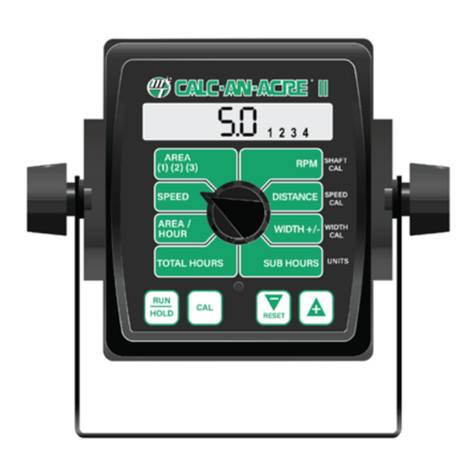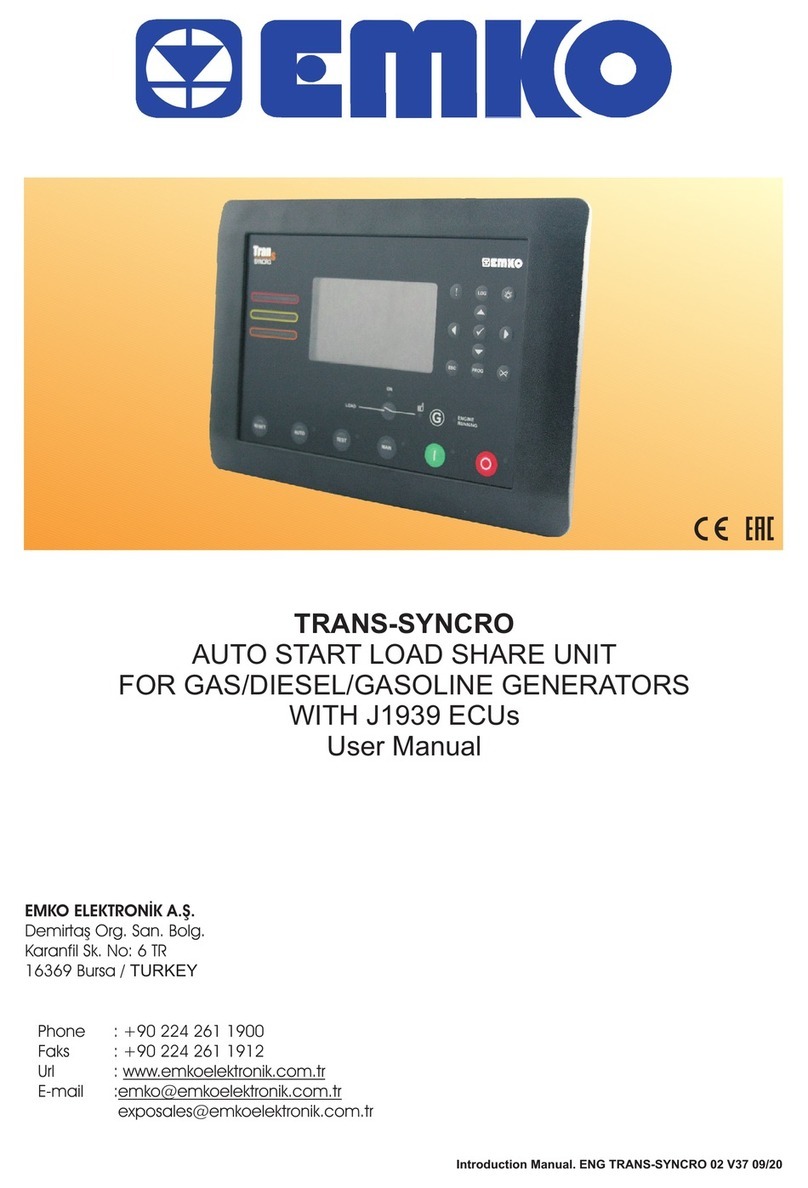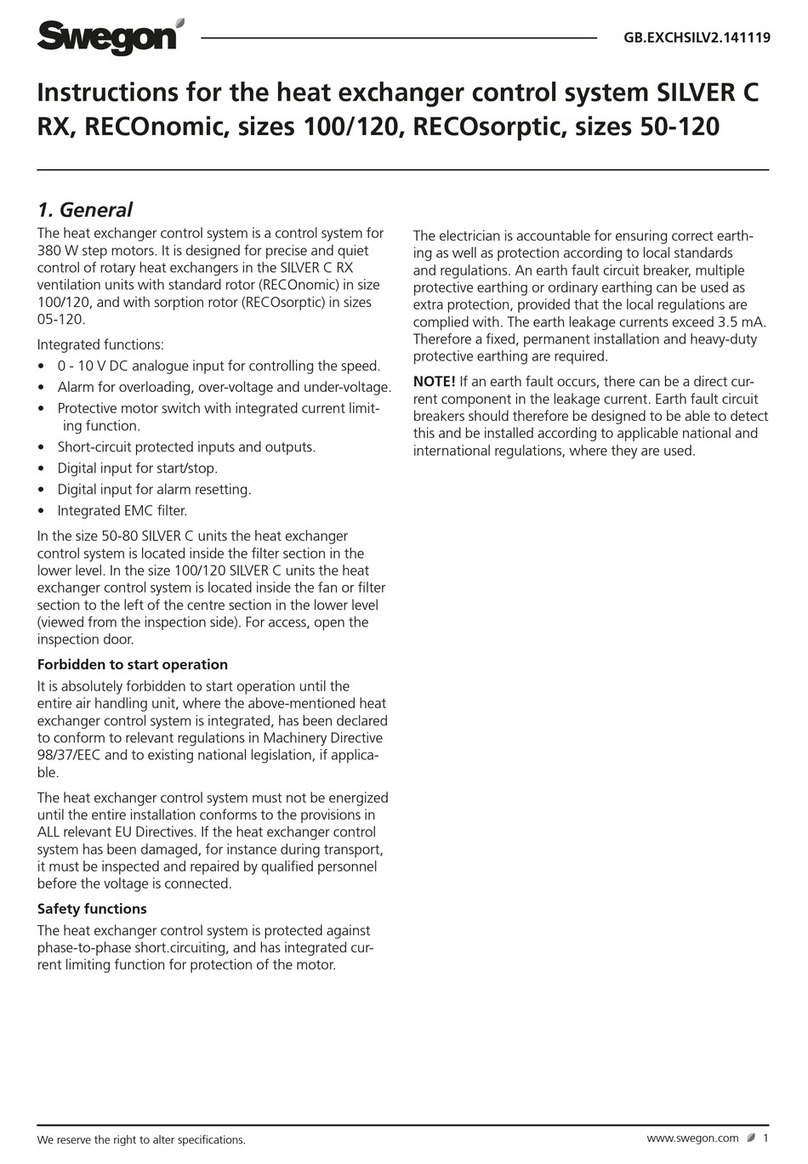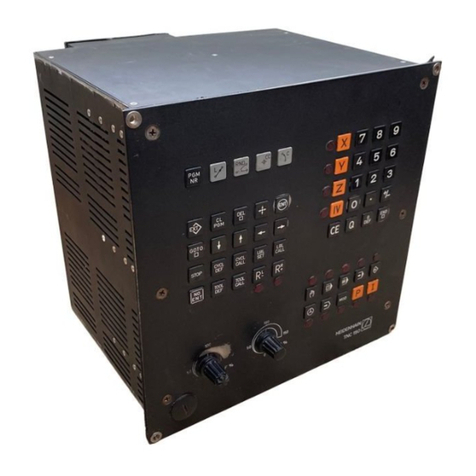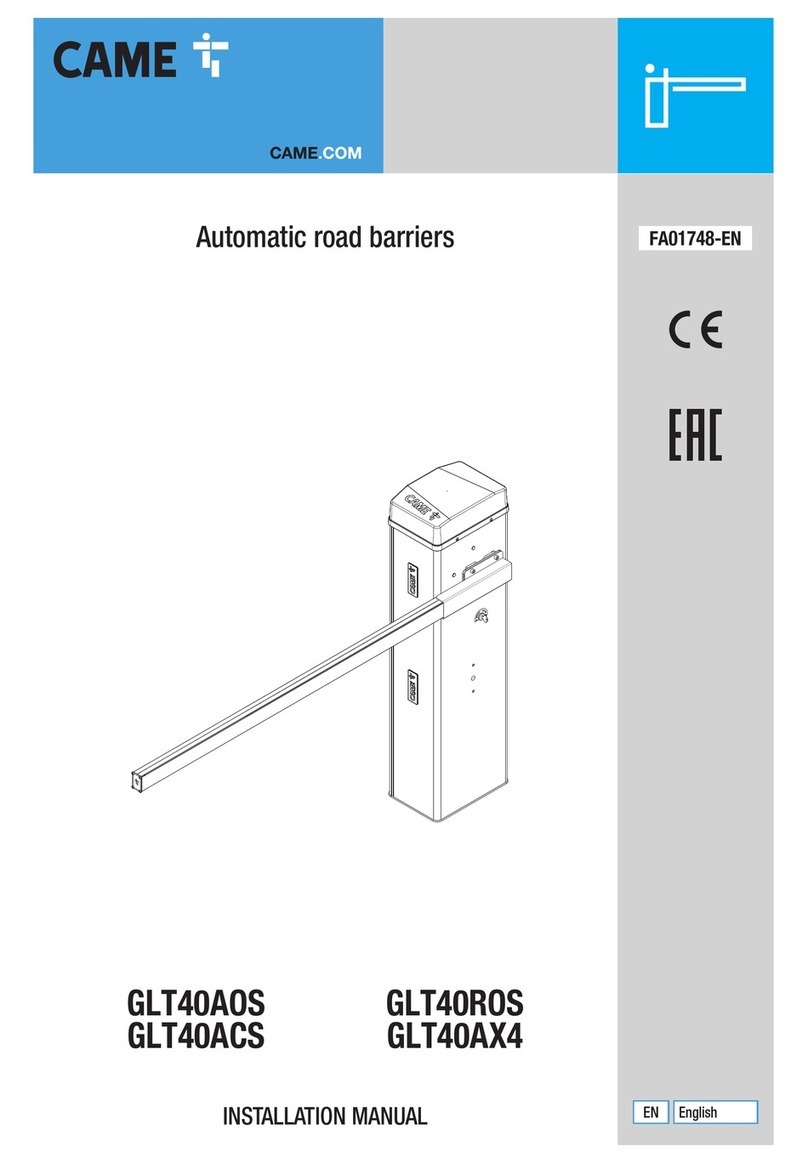
GB.FUNKMIRU.121204
Swegon reserves the right to alter specifications.
10 www.swegon.com
Operating times via GOLD hand-held micro terminal
This section is only of interest if you are wiring electrical
connections to the GOLD air handling unit.
In the GOLD unit’s hand-held micro terminal (under instal-
lation – Functions – MIRU Control – Functions OFF/ON),
set Fan 1 = Active. If several MIRU Control units are con-
nected, these fans should also be set = Active.
Under Miru Control – Operation, you must select the fol-
lowing for each fan (Fan no.):
- Whether the MIRUVENT-fan is to have the same start
and stop times as the GOLD unit. Parallel start = 1.
- Whether the MIRUVENT-fan is to have the same low
speed and high speed settings as the GOLD unit. Parallel
LS/HS = 1.
- Whether the MIRUVENT should operate together with
the GOLD unit fans to automatically balance the flow.
Balancing = 1.
- Which of the GOLD unit fans will operate to achieve
total flow balance. If SA is selected; the supply airflow in
the GOLD unit will be increased by the corresponding rate.
If EA is selected, the extract airflow in the GOLD unit will
be decreased by the corresponding rate.
Under Miru Control – Time channel, you must select the
following for each fan (MIRU no.):
- Operation/Times for all four channels.
Operation: Low speed or High speed.
Time: If the same in-operation times are to apply every
day of the week (Mon.–Sun.), you need only program
one time channel. Various in-operation times during the
days of the week should be programmed in separate time
channels (Mon.–Fri., Sat.–Sun. or Mon., Tues., Wed., etc.)
Inactive means that the settings for Operation and Time
do not have any effect.
Under Miru Control – Flow/Pressure, you must select the
following for each fan (MIRU no.):
- Which flows or pressure the MIRUVENT fan should
generate while operating in the low speed mode and high
speed mode respectively: All the values can be set, but
only those for the activated function (Flow regulation or
Pressure regulation) will apply.
INSTALLATION
FUNCTIONS
*FUNCTIONS*
TEMPERATURE
FLOW/PRESSURE
FILTERS
OPERATION
HEATING
COOLING
BLUE BOX
HUMIDITY
ReCO2
IQNOMIC PLUS
ALL YEAR COMFORT
OPTIMIZE
MIRU Control
*MIRU Control*
FUNCTION OFF/ON
SETTINGS
Menus, hand-held micro terminal, GOLD



